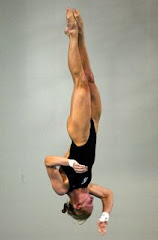Tuesday, March 22, 2011
My Latest "Charlotte Today" Spot
http://www.wcnc.com/charlotte-today/Power-of-Plyometrics-118373089.html
I just appeared again on our local morning news show, "Charlotte Today," to discuss the Power of Plyometrics as a supplement to your weekly workout routine.
What are plyometric exercises?...explosive movements, like leaps, hops, bounds, jumps, clapping push-ups, etcetera. Anything that makes your body bounce can pretty much qualify as a "plyo." These exercises force the muscles to work like a rubber band. The muscle first stretches (an eccentric, elongating contraction), then quickly turns around and recoils (ammortization phase) into a contraction (a concentric shortening of the muscle).
What are the benefits of training with plyometrics?
1) Power: Training plyos makes you more powerful. Power is the exertion of force with speed. If you want to run faster or jump higher, plyos are where it's at.
2) Muscle Efficiency: When you ask your muscles to exert force quickly, you are asking your neuromuscular system to work more efficiently. Unlike strength training, plyo training does not add muscle mass to your frame; rather, it makes the most of the muscle tissue you already have. Consequently, you get stronger, more powerful, and more toned while staying lean.
Be careful! Plyometrics can easily be overtrained. These exercises are tough on bones and joints. Plyos should be added to your weekly workout routine as a supplement here and there. I would advise training plyos no more than 2 to 3 times per week, 10 to 15 minutes per session.
Here is a simple sample plyometric workout routine (8 minutes long, minimal equipment required):
*2 min. Jump Rope (regular, high knees, butt kicks, side to side, jack legs, etc)
*1 min. Squat Jumps
*1 min. Lunge Jumps
*1 min. Box Jump to Depth Jump (jump up to a step, then step off and absorb your weight upon landing)
*1 min. Clapping Push-Ups (or alternating shoulder tapping push-ups)
*2 min. Agility Hop (ankles glued together, jump side-to-side, like a slalom in place)
Subscribe to:
Post Comments (Atom)



No comments:
Post a Comment